Visualize Photography Lighting Setups in Blender
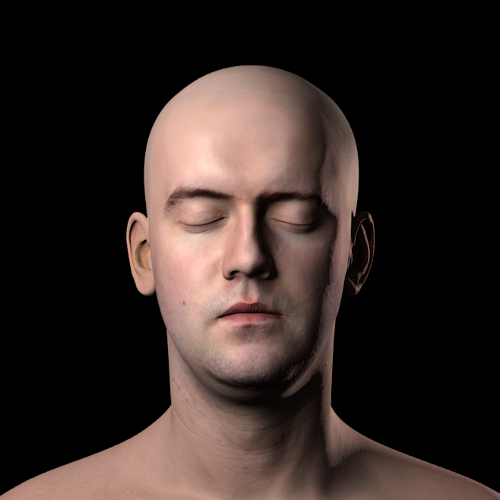
The most patient portrait model in the world…
Not too long ago I finally got around to picking up a decent manual flash for exploring lighting and speedlight techniques. I picked up a Yongnuo YN-560 Speedlight Flash for Canon and Nikon, and my friend Sean was kind enough to send me his old radio triggers to play with. I was mostly all set to start exploring the world of off-camera lighting…
I say mostly because though I had a rough understanding of how I wanted to use the light, I was not well versed on what could be done with it. So I spent a bit of time on the Flickr Strobist Group, and read through all of the Lighting courses on the Strobist site. There is an absolute wealth of information on the site, and I cannot recommend it enough.
Having a reference for how the contribution of different types of light will affect the final outcome is very handy for me. I’ve seen people who have taken the time to setup lighting diagrams where they will modify a given light for direction/angle, and cycle through many possibilities to help as a reference (Here is one cheat-sheet from DIY Photography).

This is nice, but what if I wanted to visualize the effect multiple lights will have all simultaneously? I guess I could go and shoot every, possible, variation, but I am really lazy. Plus, I don’t have access to a model with the patience to sit there while I fiddle with multiple lights, multiple times.
It occurred to me that I already had a great tool for doing this visualization already installed on my computer. That tool is Blender 3D. I already had been using this open source 3D modelling tool for some time, and was familiar enough with it to be comfortable emulating my lighting setups. All I needed was a good model. Infinite Realities released a full 3d scan by Lee Perry-Smith that was graciously licensed under CC-BY. This gave me a full 3D scan of a head & shoulders with the UV maps already created for textures, and a normal map to use for bumping. Perfect!
I loaded up the model and textures, and proceeded to create some lights in Blender that would mimic lights I might use in the real world.
I focused first on a softbox. I have a DIY 24" softbox I put together ages ago that I used as a primary light for some time. I wanted to emulate what I was getting as a result from that lightbox, virtually.
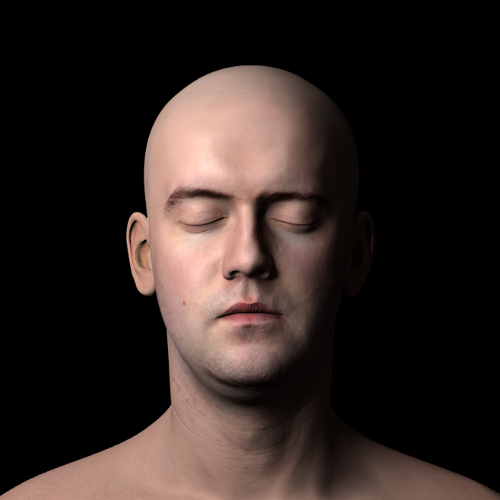
24 inch softbox 45° cam left, up 30°
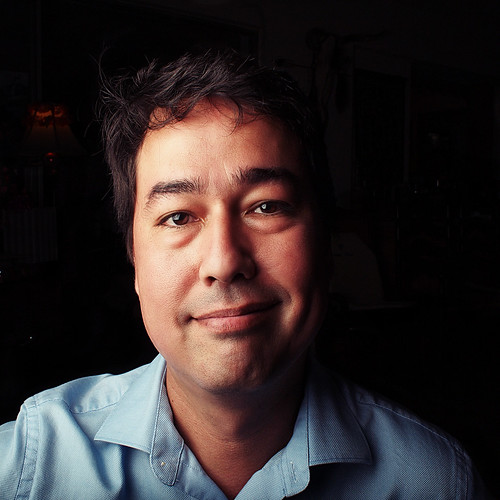
What’s cool, though, is that I can now add any other type of light that I want easily to see what the effect will look like. Say I wanted to add a kicker behind me on the shadow side of that softbox?

24 inch softbox 45° cam left, up 30° with kicker behind ~ 45°
Or place 2 identical softboxes to either side of the subject…
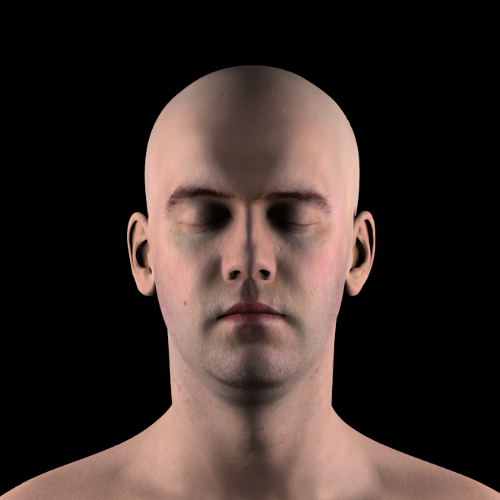
24 inch softbox left and right of subject.
I can also emulate the effect of other types of light modifiers. If I wanted to use a ringflash only, I could do this…
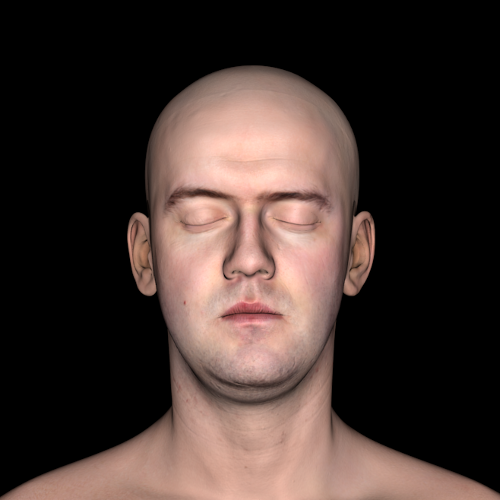
Ringflash (or beauty dish if I wanted).
Or I could try any combination my heart desires! In this case, what about a clamshell setup, where I vary the power of the lower half of the setup…
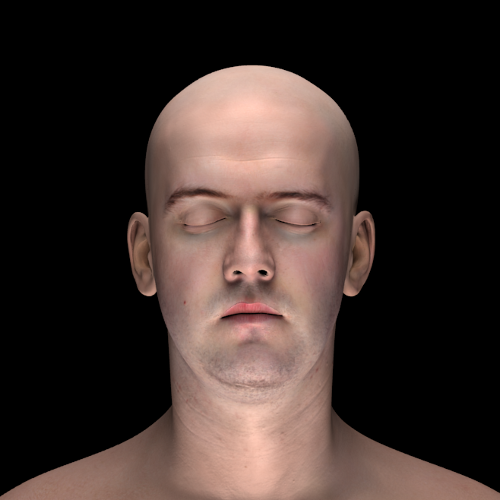
Clamshell - top and bottom same power (both 24 inch softboxes)
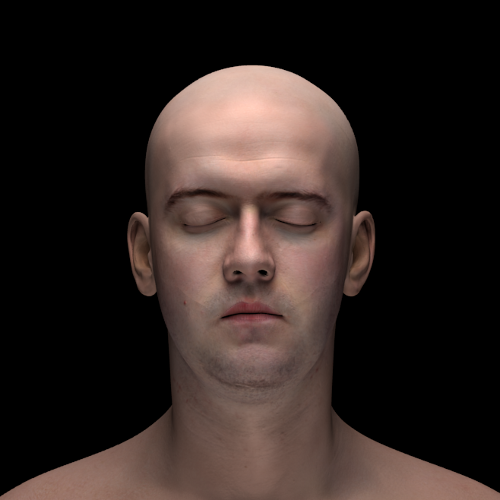
Clamshell - top full power, bottom 25% (both 24 inch softboxes)
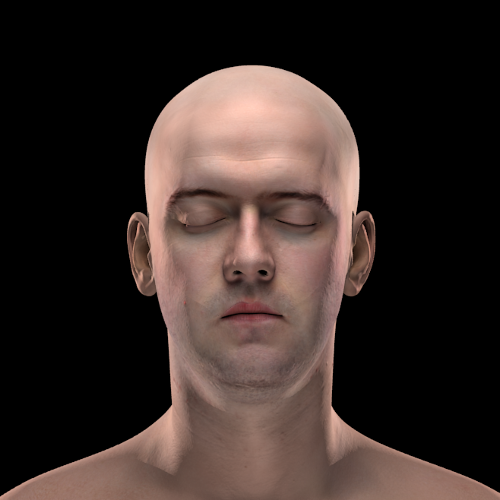
Clamshell - top full power, bottom 30% & kickers
I could go on and on with examples, but I think you get the idea.
Now, I’ll go ahead and leave the .blend file here for anyone to download and use. Don’t forget that you’ll need to grab Blender as well (download Blender here).
Download the .blend (Google Docs - File → Download) [27MB]
A few quick words of note to help out if you’re new to Blender. Right-click will select an object (it will turn orange). The “A” key will select all, and cycle to select none if you hit it again.
The softbox shown in the initial startup is set to always point at the model (so is the camera, btw), and to stay a set distance from them (approximately 2 feet). With the object selected (like the softbox), the “G” key will allow you to move it in a view, and the “R” key will allow you to rotate it in a view. The main window is what the camera is seeing, and there are side and top views right next to it.
Most importantly, the F12 function key will render your image for you!
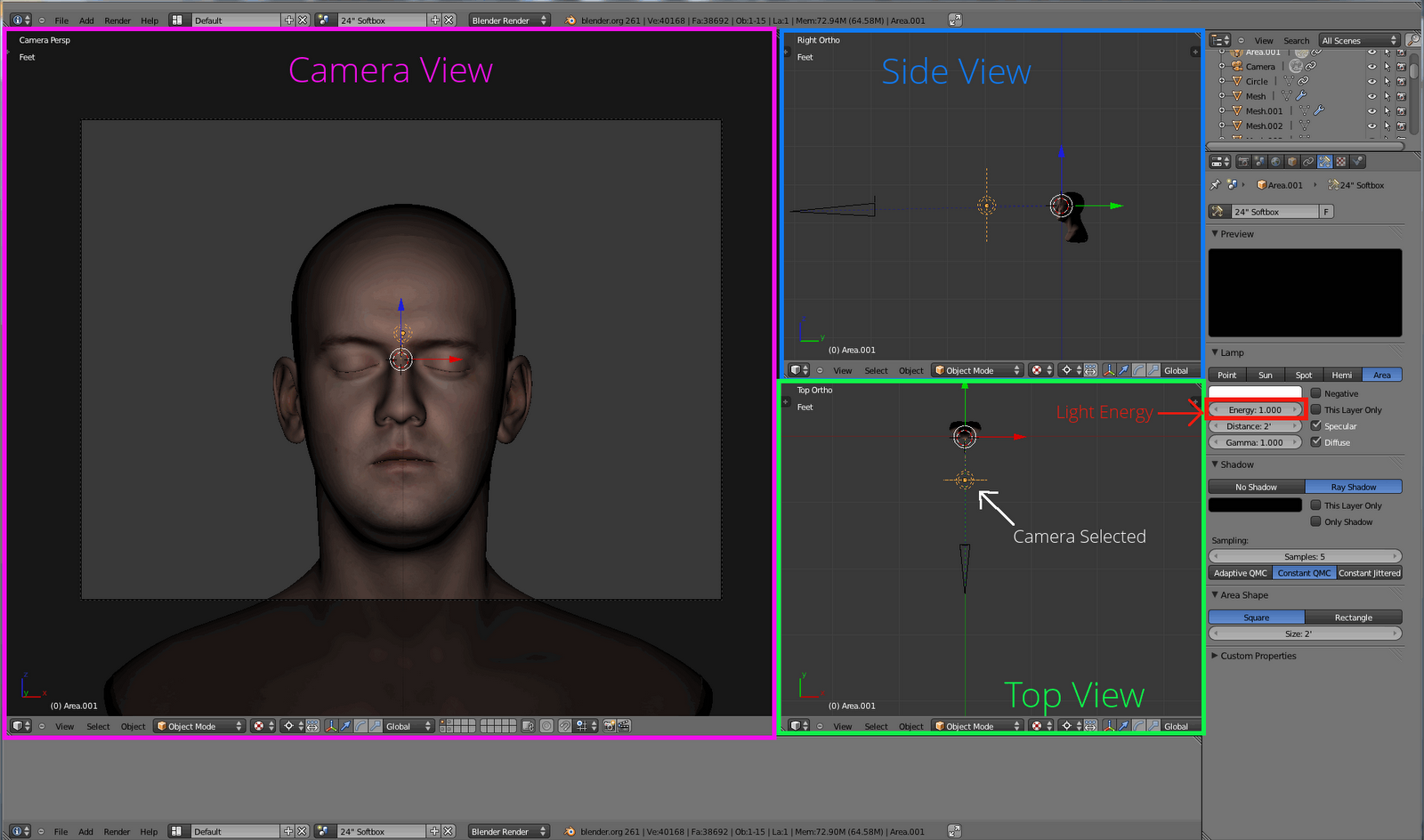
I did intend to try to make this more user-friendly. The key word there was “intend” as it’s a royal PITA to do so. I may fiddle with it more if there is any response or interest, and try to help out where I can.
Lighting Maps
In the meantime, I generated the obligatory light map cheat sheet from all of the different renders. There are three here, one for the softbox level, at 30°, and at 60°. All of them move the softbox around the subject in 5° increments.

Softbox Level with subject, 5° increment rotation. (Download full size)

Softbox 30° with subject, 5° increment rotation. (Download full size)

Softbox 60° with subject, 5° increment rotation. (Download full size)
Feel free to use these cheat sheets however you see fit! Hopefully this will be helpful to at least a few people who might be brave enough to tackle the Blender interface to try this out. I know it’s been quite helpful for me to be able to quickly setup a scene and visualize what it will look like ahead of time!
Bonus
I’ve zipped up all of the individual .png renders that I used to make the light maps with above. You can use these in your favorite image editors to combine them to see the effects of multiple lights on the model (open one version you like, then add another version as a new layer above it and change it’s blending mode to “Screen”.
Download 0° .zip
Download 30° .zip
Download 60° .zip
These are hosted on Google Docs, so after following the link, hit File → Download.
Enjoy!
Questions or feedback? Let me know in the comments below!
Bonus Bonus!
Jimmy Gunawan has gone ahead and taken this a step further by enabling use of the new Blender Cycles Render engine with this model. If you’re not sure what it’s about - have a look at his youtube video doing the conversion and see how great it is rendering in the viewport the way it does:
You can check out more of his great stuff at Blender Sushi!
Download the cycles version created by Jimmy!
